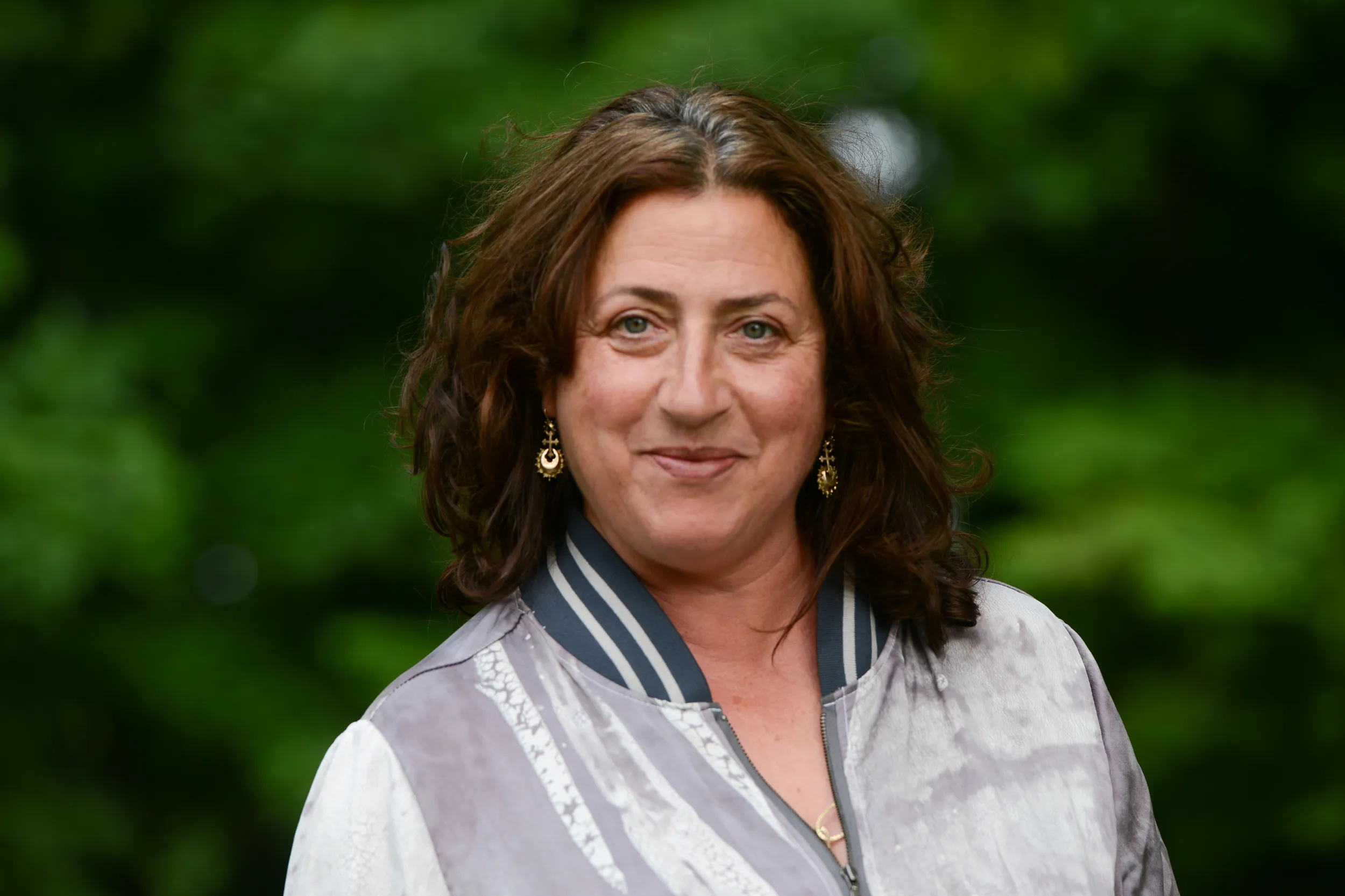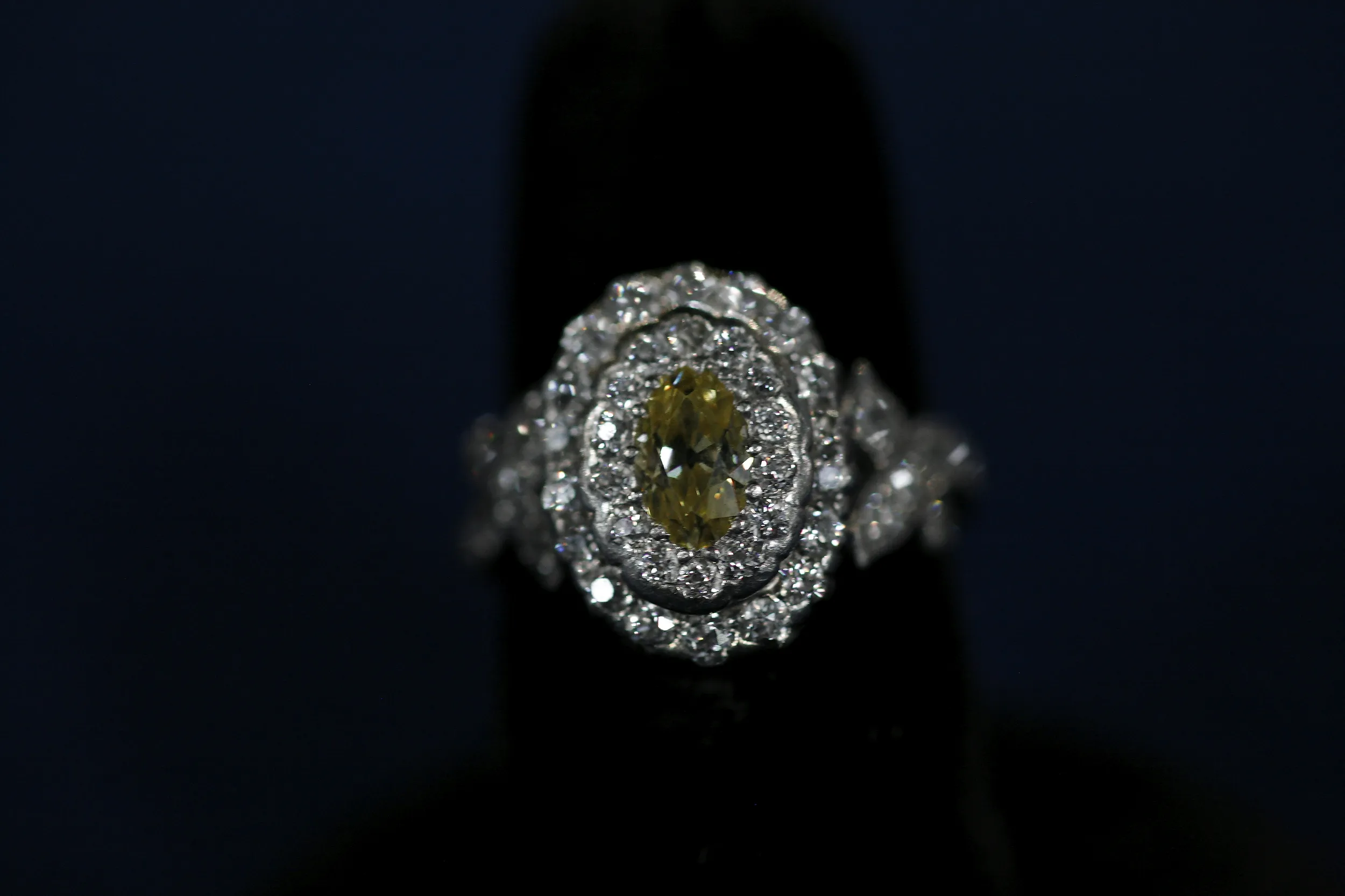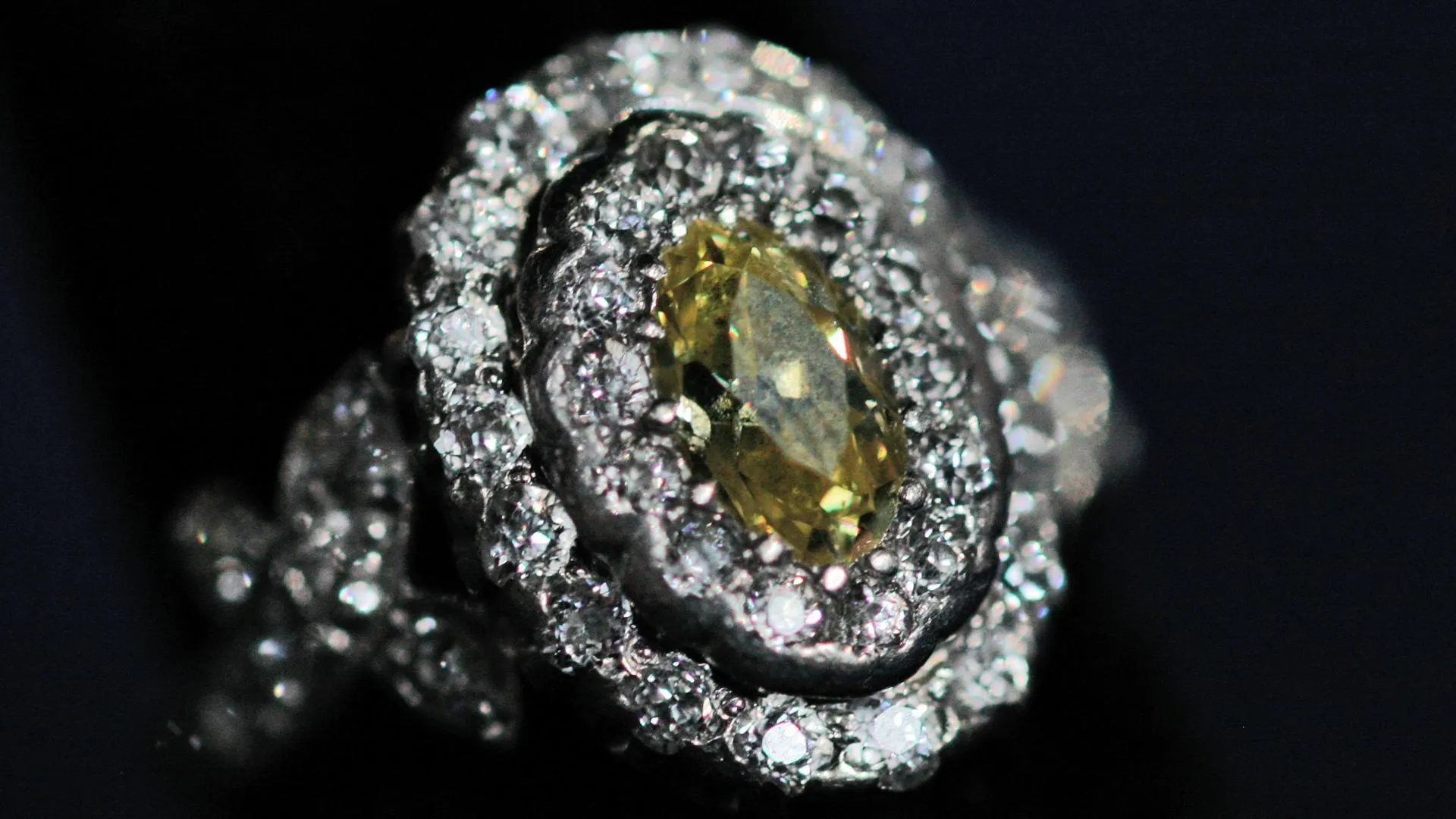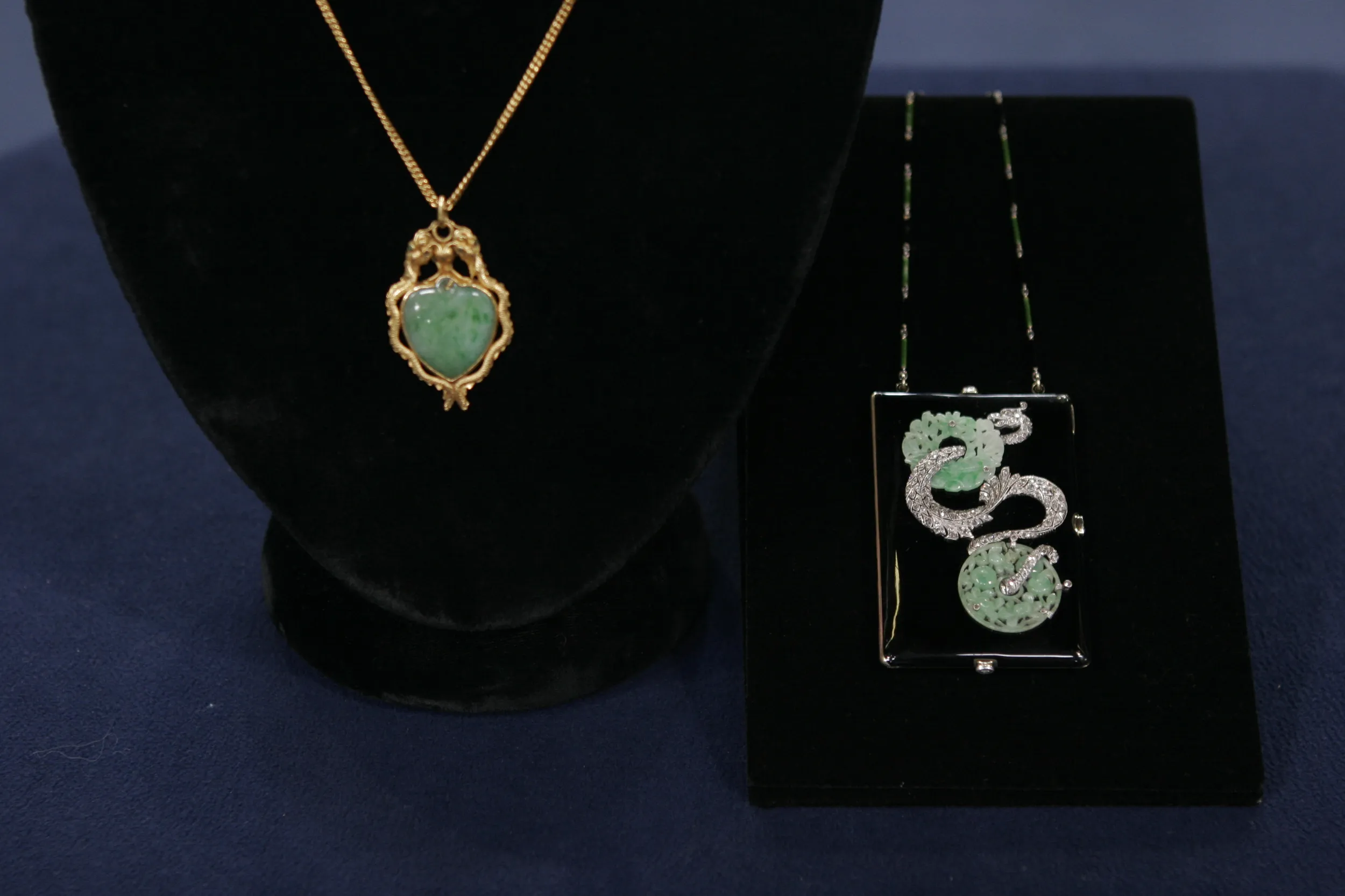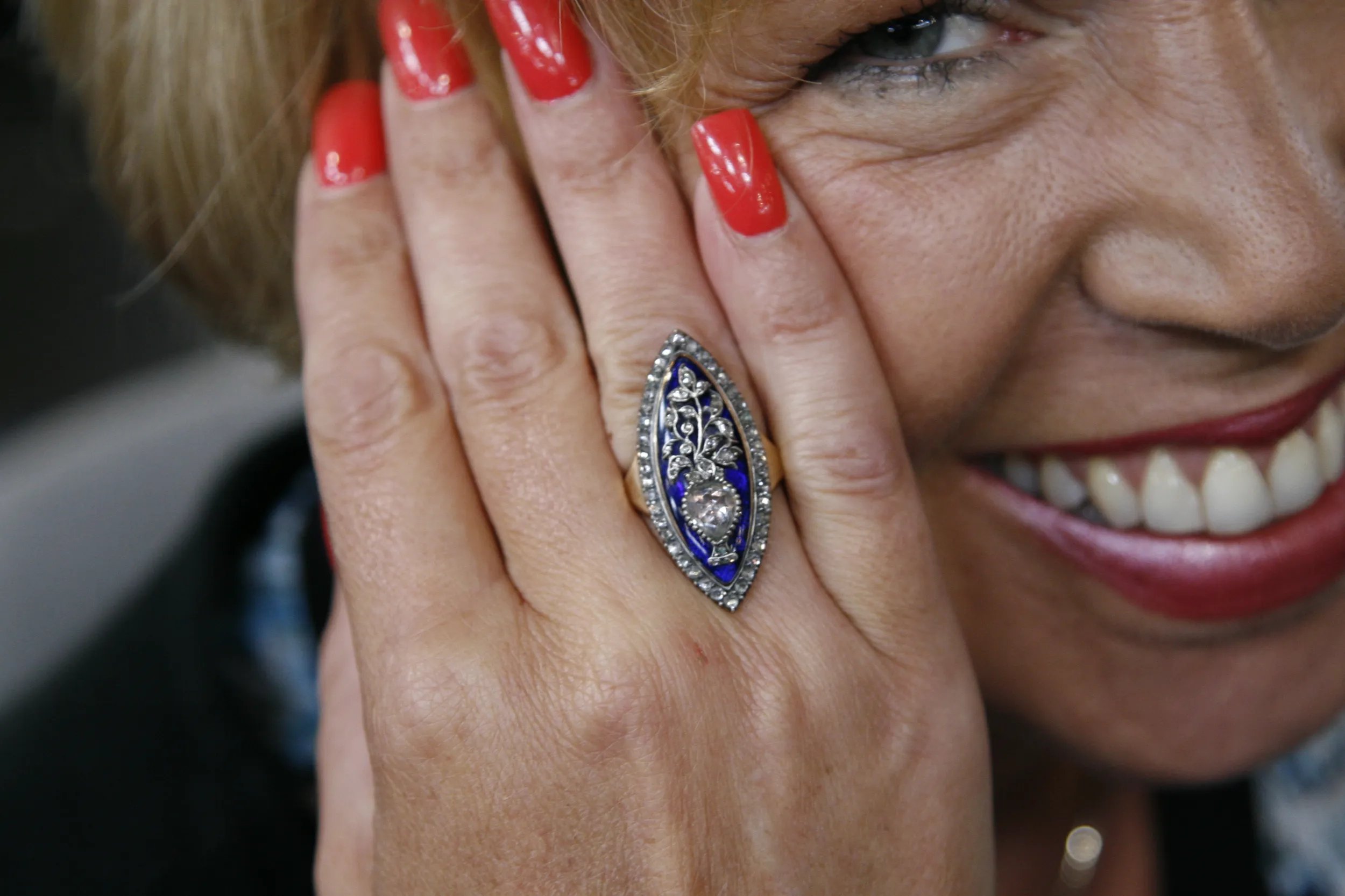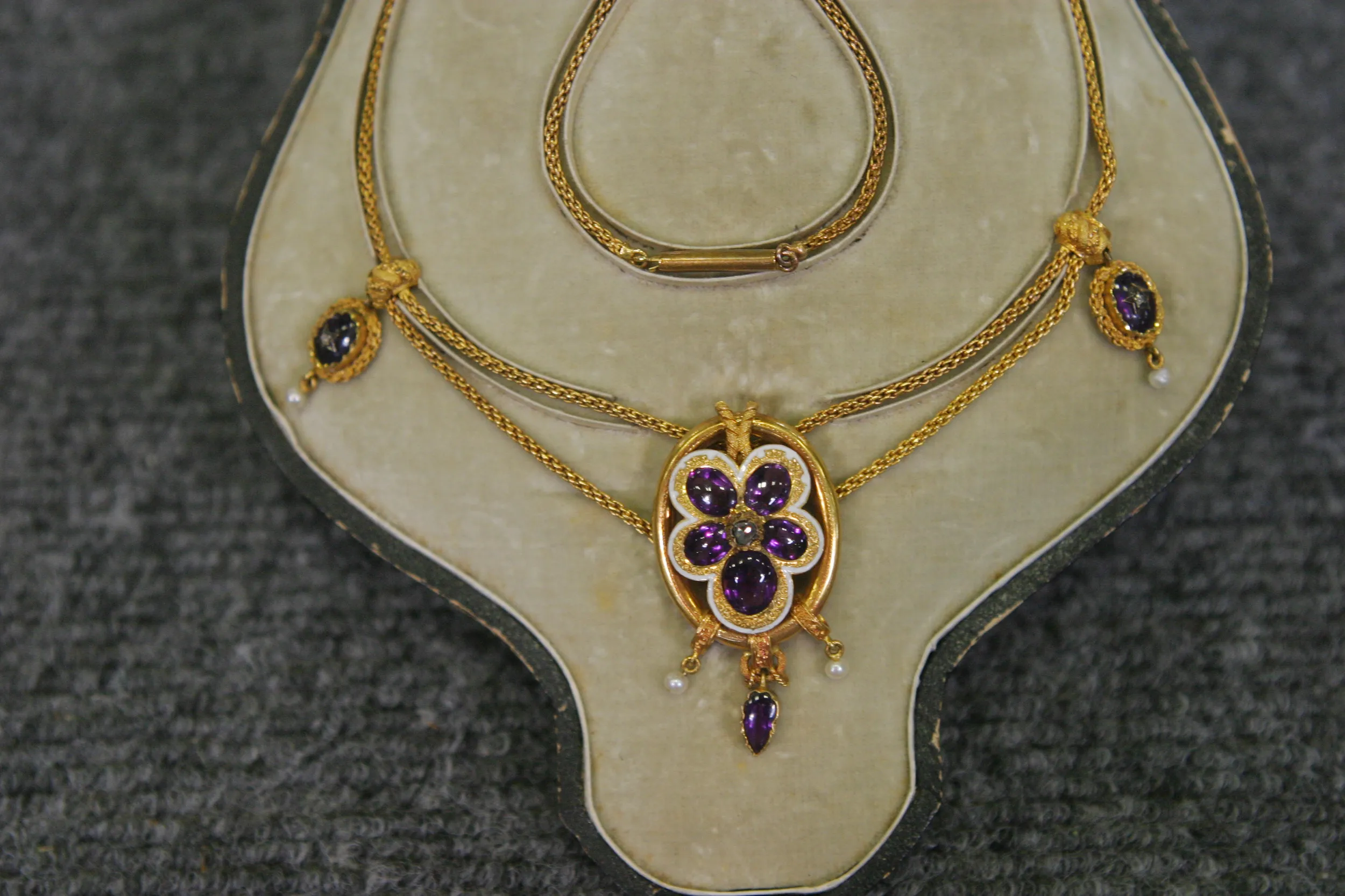GUEST: This ring was given to my grandmother from my grandfather as an engagement present, and they were married in 1915, and... I don't know too much about it. I think it's a canary diamond, but I'm, I'm not positive, and I think it's platinum, but we've never had it appraised or anything like that.
APPRAISER: Okay. And have you worn it, or has it been worn in your family?
GUEST: My mother wore it quite a bit. But I have it in a safety deposit box now.
APPRAISER: A canary is a term that we really don't use in the jewelry world as much as we used to. I would say that this is more of a fancy, intense-yellow-color diamond, and basically, that's the saturation of the diamond, so the amount of saturation of the yellow in that diamond determines its value. I've gauged it out-- in the mounting, you can never really know the exact weight-- but according to the millimeter gauge, pretty much looks like it's about a half of a carat.
GUEST: Oh, okay.
APPRAISER: Surrounding the diamond is this really great platinum work, which was very popular around 1915, 1910, which is when you said they got married.
GUEST: Right. Yes, mm-hmm.
APPRAISER: Where were they from?
GUEST: Well, I don't know exactly where they met-- I think they met here in Spokane-- but she went to school in Georgetown.
APPRAISER: Mm-hmm.
GUEST: And he was in medical school at Harvard, so I'm not sure if that had any influence...
APPRAISER: Okay.
GUEST: ...where he bought it or not.
APPRAISER: Well, it looks to me like a very fine, sort of East Coast jeweler. It's unsigned, so we can't really determine who made it. But because of the fine platinum work and this really nice garland motif, which we have on the sides here, as well, it's a very fine ring, and a very fine manufacturer. For auction purposes, I would estimate this to be worth anywhere between $4,000 and $6,000.
GUEST: Oh, great. Great. Beautiful.
APPRAISER: Yeah. Yeah.
